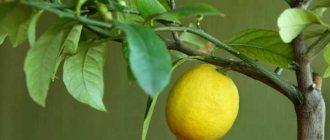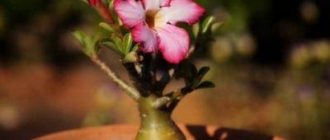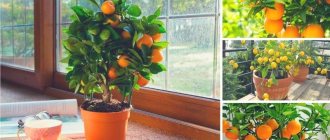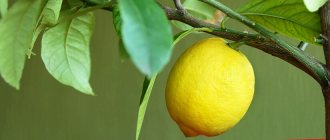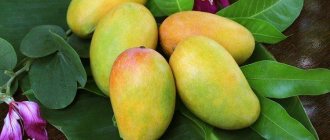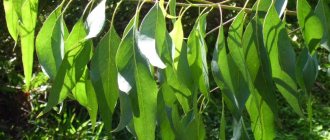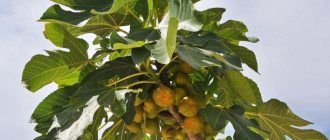Author: Elena N. https://floristics.info/ru/index.php?option=com_contact&view=contact&id=19 Category: Fruit and berry plants Published: June 23, 2018Last edits: April 15, 2021
- Landing in the ground
- Japanese medlar (Eriobotrya japonica)
- Beneficial features
Medlar, or cup tree, or ezgil (lat. Mespilus) is a genus of deciduous plants of the Rosaceae family. According to The Plant List, there are only three species in the genus. The word “loquat” was borrowed from the Turkish language, into which it came from Greek. German medlar, or common medlar, is grown as a cultivated plant; it does not come from Germany, as one might assume, but from South-West Asia and South-Eastern Europe. The medlar was brought to Germany by the Romans. Today, it is found in the wild in Azerbaijan, South Ossetia, Georgia, Armenia, the North Caucasus, on the southern coast of Crimea and even in the central regions of Ukraine. This plant has been grown for more than 3000 years. It was introduced into culture by the ancient Greeks; in the ancient Roman era and the Middle Ages, medlar was already the most important fruit plant. However, then interest in it gradually faded away; it was replaced by other crops, including those imported to Europe from the New World. Nowadays, medlar can be found rarely.
Planting and caring for medlar
- Flowering: late spring or early summer.
- Planting: three-year-old seedlings are planted in the ground in early spring or during leaf fall.
- Lighting: bright light.
- Soil: to fill the planting pit, prepare a mixture of equal parts of turf soil, humus, deciduous soil and sand.
- Watering: as needed, trying to avoid overwatering.
- Feeding: young trees are fed once every 3 weeks, and adults – 2-3 times per season with complex mineral fertilizers or mullein solution.
- Pruning: sanitary cleaning is carried out in early spring, and crown formation begins at the age of four.
- Reproduction: seeds (seeds) and cuttings.
- Pests and diseases: practically not affected.
- Properties: medlar fruits are a valuable dietary product, and a decoction of the leaves of the plant has anti-inflammatory, strengthening and hemostatic properties.
Read more about growing medlar below.
Characteristics of the medlar fruit
There are more than 30 varieties of medlar, but two varieties are most often cultivated: German and Japanese. According to the areas of growth, Germanic is also called Caucasian or Crimean. The most suitable medlar for home cultivation is called “Japanese” or Loqua. Although the plant is indirectly related to this country, it was bred in China.
Japanese medlar thrives in protected soil conditions and can be planted in a greenhouse, winter garden or an ordinary apartment. This evergreen subtropical plant does not shed its leaves in winter and does not tolerate freezing temperatures. In nature it is a spreading tree over 5 m tall.
As a potted crop, medlar does not exceed 2 meters. A young plant can be easily formed as a compact, decorative tree with a low trunk and a neat crown. The medlar root system is combined: along with a powerful taproot, there is an extensive network of surface roots. Thanks to this, medlar is resistant to heat and is able to grow back after freezing.
The stems and shoots of the plant are densely covered with grayish felt pubescence. Loquat foliage is very bright, deep green, hard to the touch and leathery in appearance. Large leaf plates (up to 25 cm) are glossy on top and have velvety hairiness on the back side. The young leaves of Japanese medlar are completely pubescent.
Flowering begins in autumn. By October, paniculate, non-drooping inflorescences of white and cream flowers form at the ends of the shoots. The diameter of the buds does not exceed 2 cm. One brush can combine more than 50 flowers. During this period, the plant is especially decorative, and the room is filled with the thick smell of bitter almonds.
The growing season for medlar is long. The fruits fully ripen only towards the end of spring. The fruit harvest period is extended and can last more than 30 days. Specimens removed from branches prematurely do not ripen after harvest.
Fruit characteristics:
- formed in clusters of up to 8 pieces;
- the shape is round or slightly elongated, from 3 to 5 cm in diameter;
- ripe fruits have orange or bright yellow peel and pulp;
- the taste is reminiscent of cherries or pears with a characteristic sourness;
- There are from 3 to 8 seeds inside the fruit.
Medlar fruits are fleshy, but quite juicy. The peel is thin, which determines the low transportability of ripe fruits. The Japanese variety includes several varieties that differ in size and color of the fruit. The most popular among them: Tanaka, Morozko, Silas, Champagne.
Botanical description
The loquat tree is an evergreen fruiting plant covered with dark gray bark that can grow up to eight meters in good conditions, but usually does not exceed six. The dark green elliptical leaves of the medlar reach a length of 8 to 15 and a width of 3-4 cm. In autumn the leaves turn red. In late spring or early summer, white five-petalled flowers open on the tree, attracting pollinating insects with their aroma. The pear-shaped or spherical medlar fruit, 2-3 cm in diameter, with permanent unfolded sepals, is reddish-brown in color and appears hollow. In garden forms, the fruit can reach the size of an average apple. Even after ripening, the medlar fruit remains hard and sour, and the fruits become edible only after long storage or after frost: they wrinkle, become smaller, softer and sweeter.
In the photo: How medlar blooms
Choosing a variety to grow
If you are going to plant medlar at home, you must first decide what kind of this tree you want to see in your apartment or country house. German varieties are considered more frost-resistant; their flowering period occurs in the spring, like most fruit trees.
The fruits of this tree ripen in summer. They are slightly smaller in shape than the Japanese lokva. They have a round shape and look very much like apricots or small peaches. The only difference between these fruits is that medlar fruits are slightly flattened towards the center.
Harvesting begins in late summer or early autumn. The tree begins to bear fruit in the fifth or sixth year of life. For fruit to set, it is necessary to create conditions for cross-pollination.
The taste of German lokva has some sourness. The pulp is firmer than that of Japanese varieties. Each fruit contains seeds; they occupy most of the volume. There can be from one to seven of them in a ripe fruit. These seeds can serve as biological material for propagation and planting of new shoots.
However, bright orange specimens are most common. The shape of the fruit resembles a medium-sized pear. There are also bones inside, most often five to seven pieces. The taste of the Japanese variety of loquat is sweeter and more aromatic.
Fruits do not last long and quickly begin to rot and deteriorate after they are picked from the tree. Therefore, various preparations are made from medlar. Read more about this below.
Care for medlar at home
Growing from seed
Growing medlar from seed can be done at home. The bone extracted from the pulp is planted no later than three days later. If you purchased medlar seeds in a store, you should understand that a plant grown from them is unlikely to produce a harvest, but medlar from the seed of an eaten fruit will almost certainly bear fruit.
The substrate for medlar can be purchased at the store, or you can make it yourself from equal parts of leaf soil, humus, sand and peat. Fill the pot with drainage holes with the substrate, remembering to first place a layer of expanded clay in it. Medlar seeds are buried 2 cm into moistened soil (up to six seeds can be placed in one pot), after which the surface is covered with film or covered with glass. While waiting for germination, the crops are placed in a warm, bright place, for example, on a windowsill.
- Muscari flowers - description
In no earlier than a month, sprouts will appear, and it will be necessary to shade the seedlings from direct sunlight, ventilate the crops daily and remove condensation from the covering so that the plants are not affected by fungal diseases from dampness. When the seedlings grow to 2 cm, the covering is removed from the pot, and the seedlings are kept at a temperature not lower than 18 ºC. If it's summer, place the pot with medlar on the balcony or terrace, protecting the young plants from gusts of wind, drafts and bright sun. Keep the substrate slightly moist by watering it 2-3 times a week.
Once the medlar has sprouted, its growth will be rapid: in a month the seedlings can grow up to 15 cm, and then, so that they do not interfere with each other, they are planted in separate deep containers with a soil mixture of coarse river sand, peat and humus. Weak seedlings may die after transplantation, but nothing can be done about it - natural selection... And large and strong plants will become even larger and stronger.
About another rare but useful plant - goji
Home medlar will bloom only in the third year after transplanting into a separate container at the end of autumn or early winter, and the first fruits may appear by the New Year. You can shape the crown of your home medlar only after flowering, although this is not necessary: you can give the crown a shape, or you can let it look natural, cutting off only thickening, weak, diseased and damaged branches.
Basic rules for seed germination
It takes quite a long time to germinate the seeds of the plant. And there is no guarantee that the tree will be covered with fruit in the future. And the first shoots will definitely not appear earlier than in a month.
After the first shoots have appeared, you can simply forget about the plant for several months. The film from the pot must be removed, and the plant must be provided with an air temperature of at least 18 degrees. If you plan to further replant it in open ground, then in the summer you should take the pot with the sprout to the balcony or even take it to the dacha. Fresh air will only benefit young shoots. You need to water the shoots at least three times a week.
Meddlar shoots develop and grow quite rapidly. Therefore, after a month they reach 15 cm. When this happens, you can safely transplant them into separate containers or plant them on the site. After transplantation, they will begin to grow not only in height, but also in width, forming a strong stem.
If the plant is grown at home, then it needs to prepare a large container so that it can grow and develop correctly. In this case, soil should be prepared for replanting, consisting of river sand, peat and a turf layer.
A young plant most often begins to bloom only three years after transplantation. This happens in late autumn - early winter. The fruits most often appear in the second half of December. The fruits will delight not only the owner of the tree, but will also surprise the guests.
After flowering, crown formation should begin. But doing this is completely optional
Pruning should be done extremely carefully. It is only required to remove weak and lifeless stems and branches.
Growing loquat in the garden
Landing in the ground
Three-year-old medlar seedlings grown at home from seed can continue to be grown as house plants or can be planted in the garden. Medlar needs well-drained soil, neutral or slightly acidic, and the plant is undemanding to the composition of the soil. Groundwater on the site should lie no higher than one and a half meters below the surface. If you decide to plant several seedlings at once, keep a distance of 4.5 m or more between them.
In the photo: Fruit-bearing medlar tree
Medlar is planted in open ground when it is at rest, that is, in spring or autumn. Clear the area intended for loquat from weeds and dig it up with bone meal. Prepare a soil mixture of equal parts of coarse river sand, turf soil, humus and deciduous soil. Dig holes one third larger than the volume of the root system of the seedling with a ball of earth. Drive a stake into the center of the hole of such a height that it reaches the lower branches of the medlar, transfer the seedling from the pot into the hole and fill the space with soil mixture. As a result of planting, the seedling should be at the same depth at which it grew in the pot. After planting, water the plant generously, and when the water is absorbed and the soil settles, tie the seedling to a stake and mulch the soil around it with a layer of compost or rotted manure 7-8 cm thick so that the mulch does not touch the trunk.
How to take care of the garden
Caring for medlar is not much different from caring for other fruit crops. How to grow medlar in your garden? You will have to water the plant, trying to saturate the soil with moisture, but not to waterlog it. After watering or rain, it is advisable to loosen the soil in the tree trunk circle and remove the weeds that appear there.
- Growing figs in harsh climates - what must be taken into account?
Tips for growing cherries - from planting to a rich harvest
Medlars are fed 2-3 times per season with both mineral and organic fertilizers, but young plants require more frequent feeding: once every 3 weeks. Of all organic fertilizers, the plant prefers mullein solution.
In early spring, before sap flow begins, it is necessary to carry out sanitary cleaning: remove diseased, broken, frostbitten branches that thicken the crown. For the first 3-4 years, you need to shorten the skeletal branches by a third of the growth per outer bud. The branches intertwined inside the crown are cut to 2-3 buds. From the age of four, the crown of the medlar, like the crown of any fruit tree, is formed, and when the formation is completed, the shape is simply maintained by pruning.
Loquat propagation
You already know how to grow medlar from a seed, but this plant can also be propagated vegetatively - by cuttings. To do this, a cutting 15-20 cm long with two nodes is cut from last year's growth, the lower leaves are removed, and the plates of the upper leaves are shortened by a third. They do this in order to reduce moisture evaporation. The sections are powdered with ash, after which the cuttings are planted strictly vertically in a pot with expanded clay and a peat-sand substrate. The cuttings are buried 4-5 cm. After planting, the soil is watered. Caring for cuttings consists of regularly watering the substrate and spraying the cuttings with boiled water. It will take about a month for the medlar to root, and when you are sure that the plant has grown roots, transplant it into the garden. The further development of the seedling may be very slow, but do not despair: if you meet the conditions for growing medlar, sooner or later the cutting will definitely begin to grow.
In the photo: Formation of medlar fruits
Three ways to propagate medlar
The most popular in our conditions is, of course, propagation of medlar by seed. However, if someone you know already has such a tree and they don’t mind sharing this happiness, you can save yourself a lot of time by asking for a cutting.
Germination of seeds (seeds)
Inside each fruit you can find from 3 to 8 large seeds. They are suitable for germination if your fruit is as ripe as possible. Use everything at once, because some of the seeds will be discarded, and some will not germinate.
Your actions:
- Clean the seeds from the fruit pulp. It is advisable to even wash them.
- Dry the planting material for about 3 days.
- Next you need to carry out scarification, that is, lightly peeling the peel. Rub the shell of the seeds with sandpaper (a file or at least a hard metal nail file). The treated shell will become less dense, which means it will be less restrictive to the future sprout.
- If desired, you can soak the seeds in a pink solution of potassium permanganate for 2-3 hours.
- Soak the seeds in ordinary water (not cold, but room water), and soak them in it for a day. After this, evaluate the result: if the seeds sink to the bottom, this is good - germinate them. If they float on the surface, they are “empty” and will not germinate - throw away such material.
- Fill a pot with drainage with the soil described above and water it. Plant 1 seed in one pot. Planting depth - 2.5 cm.
- Sprout the seed in a homemade greenhouse (cover the pot with glass or film, I use a transparent microwave-safe plate). Remove the greenhouse from time to time and let fresh air into the pot. If the soil dries out, spray or water it. You can keep the pot on a south-facing windowsill.
- When the sprout appears, remove the greenhouse and shade the pot.
- When the plant grows 3 pairs of true leaves (the first two, cotyledons, do not count), you can begin to form a tree. Pinch off the top - you want the medlar to start branching.
It is believed that it is best suited for a window sill. But it is almost impossible to grow the popular German medlar indoors.
As for varieties, the most praised are:
- Morozko. It can grow in a house, greenhouse, winter garden. The fruits on the tree grow red-brown and are not astringent.
- Tanaka. The fruits are sweet and sour, tender, and quite large (up to 80 g).
- Champagne. The fruits of the variety are large, yellow, with edges, and delicate in taste.
- Sales. With large orange fruits that taste like apricots.
- Premier. Juicy, creamy fruits with noble sourness.
When propagated by seeds, the resulting tree will be “correct”, that is, with all the varietal characteristics of its “mother”.
A tree grown from a seed can bear fruit at 4-6 years of age.
Still in doubt? Here is a particular example of successful seed germination. Of course, this medlar is not blooming yet, but it is already turning green beautifully and confidently:
Cuttings
Last year's branch, 15 cm long, with at least 2 buds, will suit you.
After cutting it, rub all the cuts with crushed coal (this will protect them from rotting) and immediately plant the cuttings in a pot with moist soil. The planting depth is 3 cm. Cover it with an inverted jar (cut plastic bottle, bag).
Keep in a sunny, warm place, ventilate from time to time, and if the soil dries out, water. The temperature in the room should not fall below 25 degrees.
Layerings
The most difficult, but also the fastest option - the resulting tree will bear fruit within a year.
Your actions:
- Select a thick, woody twig.
- Using a sharp knife, remove the bark in a circle, as if putting a “ring” on the branch.
- Cut a plastic bottle and put it on a branch. Stuff light soil inside. Secure the bottle, but so that there is access to the soil - it must be watered often.
- After about 2 months, the branch will sprout roots. When they get stronger, remove the bottle with soil, cut off the branch with roots and plant it in a separate pot. The cuts on the mother tree and the detached layer can be ground in with the same crushed coal.
Diseases and pests
Loquat is quite resistant to both diseases and pests, but from time to time it can be damaged by leaf-eating caterpillars. How to deal with them? In the spring, you need to collect all the spider web nests from the tree and burn them. During the budding period, the medlar and the soil around it are treated with a seven percent solution of Karbofos or a three percent solution of Nitrafen or Chlorophos. For preventive purposes, medlar twice a year - in early spring and after leaf fall - is sprayed with solutions of Fitoverm (20 g per 10 l of water), Insegar (5 g per 10 l of water) or Lepidocid (25 g per 10 l of water).
Crown formation
Geranium at home - where is it better to place it in an apartment, in a flowerpot or on a windowsill?
In nature, Japanese medlar is found in the form of a slender tree about 6–8 m high or in the form of a dense-leaved shrub with a rounded shape. At home, the plant rarely grows above 1.5–2 m. Even at the stage of formation of the 2–3rd leaf, you should decide on the future shape of the medlar. To grow a bush at this stage, the sprout should be pinched; if you want to grow a tree, then after 6–8 months the side shoots begin to be pinched for better tillering.
Types and varieties of medlar
As we have already mentioned, of the three species of the genus, only German medlar, or Caucasian medlar, or Crimean medlar is grown in culture - the plant that we described at the beginning of the article. However, there is also Japanese medlar, or eriobothrya, or loquat, or shesek - a small evergreen ornamental and fruit plant grown both in open and indoor ground. Loquat belongs to the genus Eriobothrya of the Rosaceae family, that is, it is a relative of the German medlar, but in fact is not a medlar.
Japanese medlar (Eriobotrya japonica)
Reaches a height of 8 meters. Both the shoots and inflorescences of the plant are reddish-gray with thick felt pubescence. Oval leathery leaves, glossy on the upper side, sessile or on short petioles, reach a length of 25 and a width of 8 cm. They are also densely pubescent below. White or yellow five-petaled flowers with a diameter of 1-2 cm are collected in terminal paniculate inflorescences. The plant tolerates cold well, and with age its winter hardiness becomes increasingly higher. Of the varieties of medlar (Eriobothrya) Japanese, the most famous are:
- Champagne is a plant with fleecy yellow fruits with delicate pulp;
- Morozko is a variety for growing in a greenhouse or at home, the fruits of which are devoid of astringency;
- Silas is a variety with fruits weighing about 80 g, similar to apricots;
- Tanaka - this plant has pear-shaped fruits, orange-yellow color with pinkish flesh, sweet and sour taste.
In the photo: Japanese medlar (Eriobotrya japonica)
Choosing a variety to grow
If you are going to plant medlar at home, you must first decide what kind of this tree you want to see in your apartment or country house. German varieties are considered more frost-resistant; their flowering period occurs in the spring, like most fruit trees.
The fruits of this tree ripen in summer. They are slightly smaller in shape than the Japanese lokva. They have a round shape and look very much like apricots or small peaches. The only difference between these fruits is that medlar fruits are slightly flattened towards the center.
Harvesting begins in late summer or early autumn. The tree begins to bear fruit in the fifth or sixth year of life. For fruit to set, it is necessary to create conditions for cross-pollination.
The taste of German lokva has some sourness. The pulp is firmer than that of Japanese varieties. Each fruit contains seeds; they occupy most of the volume. There can be from one to seven of them in a ripe fruit. These seeds can serve as biological material for propagation and planting of new shoots.
However, bright orange specimens are most common. The shape of the fruit resembles a medium-sized pear. There are also bones inside, most often five to seven pieces. The taste of the Japanese variety of loquat is sweeter and more aromatic.
Fruits do not last long and quickly begin to rot and deteriorate after they are picked from the tree. Therefore, various preparations are made from medlar. Read more about this below.
Medlar in landscape design
Designers plant German medlar, with its spreading and dense crown, for its reddish-brown foliage. Often two or three trees are planted to the north of other plants so that they create a barrier from the cold winter winds, because mature medlar is winter hardy.
- Conditions for growing mirabilis in the garden
Medlar is grown as a central point in a small garden: its magnificent crown is decorative even without leaves, and in the spring it opens flat, saucer-like, fragrant pinkish or white flowers. The medlar will bloom for the second time in August-September, and in the fall the leaves of the plant will turn an unusual reddish-brown or red-yellow hue. Fancy fruits also add to the plant's attractiveness. Decorative throughout the season, medlar can be planted in a row along the garden path, creating a park alley of trees with slender trunks and closed crowns.
High-tech style and medlar
Among the many modern interior design styles, the high-tech style stands out clearly. The minimum number of items in the interior made of metal, glass and plastic. Straight and strict designs, modern technologies - all these are the main characteristics of the high-tech style.
In this lifeless space of cold practicality, I would like at least one micro-island of positive energy - a small formed citrus tree or medlar. Such tropical trees will not change the style of the interior, but will only successfully complement it. And care will not distract from everyday activities and disrupt the plans of the owners.
Properties of medlar - harm and benefit
Beneficial features
Medlar fruits contain iron, calcium, potassium, phosphorus, iodine, magnesium, zinc, selenium, sodium, fructose, sucrose, citric and malic organic acids, vitamins A, C, B1, B2, B3, B6, B9, pectins, tannins and phytoncides, which promote recovery from gastrointestinal diseases, normalizing intestinal function, relieve pain from stones in the urinary tract and kidneys.
A decoction of unripe medlar fruits relieves inflammation and stops intestinal bleeding. A decoction of leaves collected from flowering medlar has an anti-inflammatory, strengthening, and hemostatic effect. An alcohol tincture is made from the fruits of the medlar, which is used to treat bronchitis and asthma in Japan.
Rich in antioxidants, dietary fiber, fructose and citric acid, low-calorie loquat is often included in the diet. It promotes healing from diabetes, increases the body's resistance to infections, eliminates the symptom of kidney dysfunction, increasing their filtering capacity, removes waste and toxins from the body, improves vision, the functioning of the digestive organs, eliminates intestinal disorders, such as constipation, helps stabilize blood pressure, relieves intestinal colic and prevents runny nose.
In the photo: Medlar is not only a healthy plant, but also tasty
Due to the high content of vitamins, macro- and microelements, medlar is recommended for pregnant and breastfeeding women who do not have an individual intolerance to the product. Masks are prepared from the pulp of the fruit, giving the skin a healthy color, eliminating age spots and smoothing out fine wrinkles.
Various dishes are also prepared from medlar, for example, jams, preserves and compotes. Medlar juice is easily fermented, so it is used to make liqueurs, wine and liqueur. A drink reminiscent of coffee is brewed from medlar seeds.
Contraindications
When introducing medlar into a child's diet, care should be taken as allergic reactions may occur. Loquat and especially its unripe fruits are contraindicated for those suffering from inflammation of the pancreas, gastritis with high acidity and peptic ulcers of the stomach and duodenum. It is also undesirable for these people to drink wine and medlar juice. But jam or preserves made from it have a beneficial effect even on a sick body.
How to eat medlar, recipes
At first, Eriobothrya was grown as an ornamental plant and only later began to be cultivated as a fruit plant. The berries are eaten peeled or peeled, raw or cooked. They turn out especially fragrant if they are stewed. Most often, loquats are added to fruit salads and pies or processed into jelly and jam. Some make light wine from it using regular crystalline sugar and vodka.
The seeds are treated like sweet almonds, which they resemble in taste. Ground seeds are used as a seasoning. You can also roast them like coffee beans and make an original drink instead of coffee. In Italy, they are used to make Nespolino liqueur, reminiscent of Nocino and Amaretto, which are made from apricot pits and nuts.
The berries last in the refrigerator for a maximum of a week.
Loquat sorbet
Peel the lokva (300 g) and remove the seeds. Boil sugar (2 tbsp) in water (200 ml). Add fruits and cook for 3 minutes. Make a homogeneous mass using a mixer. Freeze in an ice cream maker. If you don’t have one, then pour the cooled juice into a deep-freeze-safe bowl and place it in the freezer of your refrigerator or freezer. Mix three times with a whisk, waiting 15 minutes each time.
After hardening, taste the sorbet again and sweeten with agave syrup if desired.
Loquat Pie
Beat four eggs and mix with 200 g of sugar to form a creamy mass. Then add 250 g of flour and 1 tsp. baking powder, then stir in 4 tbsp. l. soft margarine or butter (you can melt it first, cool a little and add in liquid form) and 2 tbsp. l. milk. Mix all this for a few minutes. Grease a rectangular baking tray, sprinkle with flour and place the dough. Wash the medlar (25 pcs.), divide into halves and remove the seeds. Then place the pieces on the dough, skin side up. Sprinkle berries with sugar (6 tablespoons total) before and during baking. In a preheated oven, bake the product at medium temperature for about 40 minutes.
Growing from seed
From a seed you can grow a full-fledged tree, which will not be inferior in its characteristics to the mother one. The main thing is to follow the technology correctly.
Seed preparation
For planting, you can only take fresh seeds. They need to be freed from the pulp shortly before being immersed in the ground. To speed up the germination of seeds, which have a dense shell, they need to be scarified. Sandpaper or a file is suitable for this. Immerse the seeds in warm water for a day, or better yet, in a solution of potassium permanganate. This will disinfect the future plant. Those bones that do not sink but float are thrown away. They are not suitable for germination.
Soil preparation
The soil for planting must be neutral. An earthen mixture consisting of:
- turf (4):
- leaf soil (2);
- coarse sand (1);
- compost (1).
The soil is first loosened and moistened. Water should saturate it completely and pour out through the drainage holes of the planting container.
Landing rules
The medlar seeds are quite large. Therefore, each requires an individual container. Bury the seed 1.5-2 cm into moist soil. Water it and cover the top with film, forming a greenhouse. The exact landing time is difficult to determine. It depends on when you get your hands on fresh fruit. The seeds should not be stored, but should be planted immediately after eating the fruit.
How to germinate a seed
In order for the planted seed to sprout and develop further normally, it needs appropriate conditions. The container with the seed, covered with film, is placed in a bright place, but not in direct sun. Watering should be moderate. The liquid should not be allowed to stagnate, but the soil should not be allowed to dry out. The greenhouse must be regularly ventilated and condensation removed to prevent mold from appearing on the soil surface.
The first shoots will appear after 3-4 weeks if all conditions for preparing and planting the seeds have been met. When they reach a height of 2-3 cm, the cover can be removed for a certain time to allow the plant to get used to natural aeration. Maintain the ambient air in the room at a level not lower than +18 degrees. From time to time, the sprouts are sprayed with warm, settled water.
Varieties of fruit tree
Having figured out what medlar is, you should familiarize yourself with what types of wood are used in gardening. This southern culture comes in 3 types, but only 2 of them have gained widespread popularity. These include Japanese medlar, as well as German or otherwise Abkhazian. Both varieties are shade-tolerant, not demanding on soil composition and can easily tolerate drought. But there are also differences between them.
Japanese medlar
Japanese medlar is an evergreen tree 3-5 m high, but there are exceptions up to 8 m. The shoots and branches of the plant are densely covered with a red-gray edge. The leaves are large, oblong, up to 25 cm long and about 8 cm wide. The upper surface of the plates is glossy dark green, the reverse side is grayish with pubescence.
This variety of medlar has a fruiting period that is radically different from other garden trees. Fruits begin to ripen in late May - early June. Their shape can be pear-shaped or round. On the branches the fruits are collected in clusters. The weight of each varies from 20 to 100 g, size is about 7 cm.
The Japanese variety of the crop prefers a warm climate and rocky soil. At a temperature of -15 degrees the plant dies. Therefore, Japanese medlar can only be grown in the southern regions or as a houseplant.
Japanese loquat fruits are similar to apricots
Based on the Japanese medlar, it was possible to develop varieties and hybrids that are distinguished by high taste qualities of the fruit and a pleasant aroma.
The most popular of them:
- Tanaka;
- Silas;
- Champagne;
- Morozko;
- Early red;
- Montreal;
- Thales.
German medlar
German medlar is often called Abkhazian, Caucasian or Crimean. This species is considered more decorative, but deciduous. The height of the tree does not exceed 3 m. The plant is easy to care for and has increased frost resistance. The fruit ripening period occurs in November.
For full tree growth, a warm winter and cool summer are necessary. Therefore, this variety can be grown outdoors in regions with a temperate climate.
The taste of the fruits of the German medlar is sweetish, but tart. Therefore, to improve it, it is recommended to remove rounded fruits from the tree after the first frost or put them in the freezer for several days.
Important! There is often confusion when writing the name of this tree, so when choosing tommool or medlar, the latter is correct.
Possible problems when growing a tree from a seed
If agricultural practices are incorrect, medlar may lose its decorative appearance. Diseases and pests can also be the reason why leaves dry out. The most common problems are:
- the roots rot. This occurs due to overwatering. To correct the situation, the medlar roots are cut to healthy fragments and sprinkled with charcoal. Then it is transplanted into new soil, having previously disinfected the pot;
- Leaves curl and wither. Possible reasons: keeping in a draft, abundant watering, excess nitrogen in the soil. You can restore a tree by moving the pot with the plant to comfortable conditions, reducing watering, reducing fertilizing with nitrogen;
- medlar grows slowly. Perhaps there are not enough nutrients in the soil, or the tree does not have enough light. Medlar prefers to be kept in good light; once a month it needs to be fed with mineral fertilizers;
- Aphids and spider mites appear on the plant. To eliminate the pest, the medlar is sprayed with a solution of laundry soap or insecticides.
Loquat affected by disease
Medlar fruits contain a large number of useful elements. An exotic lover can easily grow a tree from a seed. To do this, you need to wipe it with sandpaper, plant it in nutritious soil, and provide the necessary conditions. If you study information about how medlar grows and apply the knowledge in practice, in 4-5 years you can enjoy tasty and healthy fruits.
Composition, calorie content and content of nutrients
The energy value of the berries is 47 kcal, and the amount of ballast substances is 1.7 g per 100 g. Muschmula is rich in amino acids (aspartic, glutamine, leucine, lysine, etc.) and carotenoids (alpha-carotene, beta-cryptoxanthin and beta-carotene). carotene).
Macronutrients:
- water - 86.73 g;
- carbohydrates - 12.14 g;
- fats - 0.2 g;
- proteins - 0.43 g.
Minerals:
- potassium - 0.27 g;
- calcium - 16 mg;
- phosphorus - 27 mg;
- sodium - 1 mg;
- magnesium - 13 mg;
- zinc - 50 mcg;
- iron - 0.28 mg;
- manganese - 0.15 mg;
- copper - 40 mcg;
- selenium - 0.6 mcg.
Vitamins:
- C - 1 mg;
- B1 - 19 mcg;
- B2 - 24 mcg;
- B3 - 0.18 mg;
- B6 - 0.1 mg;
- folic acid - 14 mcg;
- A - 76 mcg.
Fatty acid:
- saturated - 40 mg,
- simple unsaturated – 8 mg,
- polyunsaturated - 91 mg.
Medlar - growing at home
Medlar - how to grow this beautiful, useful tree at home?
You can also grow medlar by cuttings, the stages of the process are as follows:
If you live in the south, a seedling grown from a seed or cutting can be planted in open ground.
The top froze in winter and dried up. But leaves emerged from the lower buds. The photo was taken in the summer of 2016.
And this is the same seedling a year later (spring 2022). The first flower even bloomed!
I hope that the tree will survive the next winters... And will bring me a good harvest!
This article was edited on May 14, 2022.
You may be interested in the following information:


